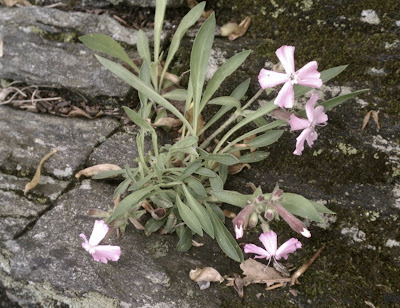There are WAY too many deer flies and mosquitoes at Eklund Garden. This is a very common complaint of visitors, especially the non-hiking ones. The Nells Rock area swarms with them because of all the swamps. The vernal pool below Eklund Garden teems with salamander larvae precisely because the baby salamanders have so many mosquito larvae to eat. This being a garden for native species -- not just native plant species, but native animals species as well -- it would be wrong to spray toxic pesticides to kill off the nuisance species.
So the challenge is to try to reduce the number of swarming deer flies and mosquitos without eradicating them from the vernal pool and without poisoning the environment or hurting other insects like bees or butterflies. What we are looking for are some kind of traps that are inexpensive and do not require electricity.
 CHALLENGE #1 DEER FLIES. In July, simply pulling a car in the parking lot results in a dozen deer flies swarming the car before you even get out. Bug sprays like DEET do not help. So the deer flies will be the priority. In doing some web research, it appears that deer flies are attracted to:
CHALLENGE #1 DEER FLIES. In July, simply pulling a car in the parking lot results in a dozen deer flies swarming the car before you even get out. Bug sprays like DEET do not help. So the deer flies will be the priority. In doing some web research, it appears that deer flies are attracted to:
- Carbon dioxide
- Movement
- Solid colors, especially blue or black
- Heat

This would explain their attraction to my blue car as I pull in the parking lot. It's a solid color, warm, exudes carbon dioxide, and is moving. There are various commercial traps that make use of these attractants, usually costing several hundred dollars each. The Horse Pal is an example:
http://www.bitingflies.com/. The flies are attracted to the solid object, land on it's "back", then fly upwards into a trap. This looks like something that would get stolen. For homemade traps, a large solid blue or black object that moves in the wind and is covered with sticky Tanglefoot is another option.
There are also some lower cost options, such as a bait bag trap, which uses a smelly bait to attract flies. Although designed more for biting houseflies, reviewers say they also trap deer flies. The trap is under $20.
CHALLENGE #2 MOSQUITOES. I don't think there is any way to really get rid of all the mosquitoes, but if the numbers could be reduced to more tolerable levels, that would be a significant improvement. Mosquitoes are also attracted to CO2, Here's one low-cost type of trap made from a soda bottle and using a mixture of sugar water and yeast in the bottom to create CO2 as an attractant:
http://www.youtube.com/watch?v=pNjyLRQutXs. Maybe we could have a line of these between the garden and the pond.
Another tactic is to entice females to lay their eggs in a container of water and then kill the larvae. That can be tricky, because if you don't kill the larvae promptly, the traps just become breeding tanks.

















































